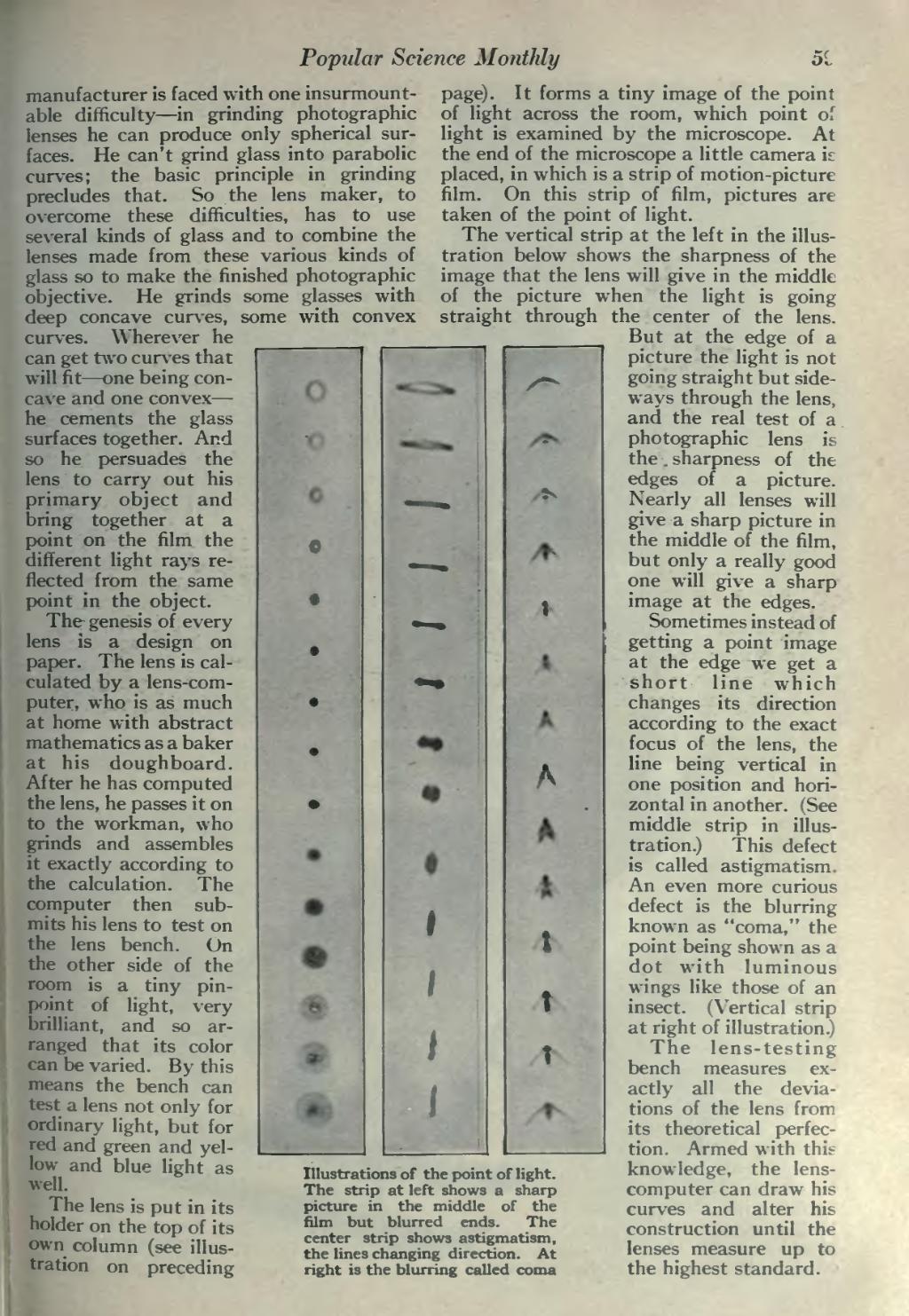Popular Science Monthly
��5C
��C
��manufacturer is faced with one insurmount- able difficulty — in grinding photographic lenses he can produce only spherical sur- faces. He can't grind glass into parabolic curves; the basic principle in grinding precludes that. So the lens maker, to overcome these difficulties, has to use several kinds of glass and to combine the lenses made from these various kinds of glass so to make the finished photographic objective. He grinds some glasses with deep concave cur\'es, some with convex curves. Wherever he can get two curves that will fit — one being con- cave and one convex — he cements the glass surfaces together. And so he persuades the lens to carry out his primary object and bring together at a point on the film the different light rays re- flected from the same point in the object.
The genesis of ever\- lens is a design on paper. The lens is cal- culated by a lens-com- puter, who is as much at home with abstract mathematics as a baker at his doughboard. After he has computed the lens, he passes it on to the workman, who grinds and assembles it exactly according to the calculation. The computer then sub- mits his lens to test on the lens bench. On the other side of the room is a tiny pin- point of light, very brilliant, and so ar-
inged that its color
- an be varied. By this
means the bench can
'St a lens not only for
rdinary light, but for red and green and yel- low and blue light as well.
The lens is put in its holder on the top of its own column (see illus- tration on preceding
��€»
��/^
��1
��Illustrations of the p>oint of light. The strip at left shows a sharp picture in the middle of the film but blurred ends. The center strip shows astigmatism, the lines changing direction. At right is the blurring called coma
��page). It forms a tiny image of the point of light across the room, which point of light is examined by the microscope. At the end of the microscope a little camera is placed, in which is a strip of motion-picture film. On this strip of film, pictures are taken of the point of light.
The vertical strip at the left in the illus- tration below shows the sharpness of the image that the lens will give in the middle of the picture when the light is going straight through the center of the lens. But at the edge of a picture the light is not going straight but side- ways through the lens, and the real test of a photographic lens is the . sharpness of the edges of a picture. Nearly all lenses will give a sharp picture in the middle of the film, but only a really good one will give a sharp image at the edges.
Sometimes instead of getting a point image at the edge we get a short line which changes its direction according to the exact focus of the lens, the line being vertical in one position and hori- zontal in another. (See middle strip in illus- tration.) This defect is called astigmatism. An even more curious defect is the blurring known as "coma," the point being shown as a dot with luminous wings like those of an insect. (Vertical strip at right of illustration.) The lens-testing bench measures ex- actly all the devia- tions of the lens from its theoretical perfec- tion. Armed with this knowledge, the lens- computer can draw his curves and alter his construction until the lenses measure up to the highest standard.
��t
��;
�� �
